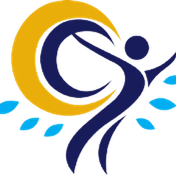 After a stroke, patients may lose the capacity to perform daily tasks, such as bathing, dressing, preparing meals, and maintaining balance. Occupational therapy(opens in a new tab) can be instrumental in addressing these challenges. It helps stroke survivors live an independent life by relearning everyday activities. If you have a loved one who is recovering from a stroke, occupational therapy is one of the many therapy services(opens in a new tab) they will need for a successful recovery process. Here are some of the benefits of getting occupational therapy.
After a stroke, patients may lose the capacity to perform daily tasks, such as bathing, dressing, preparing meals, and maintaining balance. Occupational therapy(opens in a new tab) can be instrumental in addressing these challenges. It helps stroke survivors live an independent life by relearning everyday activities. If you have a loved one who is recovering from a stroke, occupational therapy is one of the many therapy services(opens in a new tab) they will need for a successful recovery process. Here are some of the benefits of getting occupational therapy.
- Occupational therapists can show patients how to be as independent as possible if one side is paralyzed. There are a variety of one-handed techniques and adapted equipment that makes it easier to do everyday activities like getting dressed, opening packages, and eating.
- Individualized programs are given to stroke patients to help them improve function, strength, and endurance. These activities could include things like stretching(opens in a new tab), gardening, and pet care.
- Of course, to ensure a patient’s safety at home, an occupational therapist conducts an in-home evaluation to identify strengths and weaknesses. Then, the therapist can make recommendations for assistive devices and home modifications based on the evaluation results.
If you are looking for an experienced occupational therapist, Outcomes Therapy OPS is the right place for you. Our team is well-trained in providing occupational therapy, physical therapy, and speech therapy services(opens in a new tab). Call us now for more details. <br />{<br />'@context': 'https://schema.org',<br />'@type': 'NewsArticle',<br />'mainEntityOfPage': {<br />'@type': 'WebPage',<br />'@id': 'https://www.outcomeshometherapy.com/how-occupational-therapy-helps-stroke-patients'<br />},<br />'headline': 'How Occupational Therapy Helps Stroke Patients',<br />'image': [<br />'https://www.outcomeshometherapy.com/wp-content/uploads/2021/03/how-occupational-therapy-helps-stroke-patients.jpg',<br />'https://www.outcomeshometherapy.com/wp-content/uploads/2021/03/how-occupational-therapy-helps-stroke-patients-300x200.jpg',<br />'https://www.outcomeshometherapy.com/wp-content/uploads/2021/03/how-occupational-therapy-helps-stroke-patients-150x150.jpg'<br />],<br />'datePublished': '2021-03-05',<br />'dateModified': '2021-03-05',<br />'author': {<br />'@type': 'Person',<br />'name': 'Louise Savoie'<br />},<br />'publisher': {<br />'@type': 'Organization',<br />'name': 'Outcomes Therapy OPS',<br />'logo': {<br />'@type': 'ImageObject',<br />'url': 'https://www.outcomeshometherapy.com/wp-content/themes/outcomestherapy/images/WEBP/main-logo.webp'<br />}<br />},<br />'description': 'If you have a loved one who is recovering from a stroke, occupational therapy is one of the many therapy services they will need.'<br />}<br />

